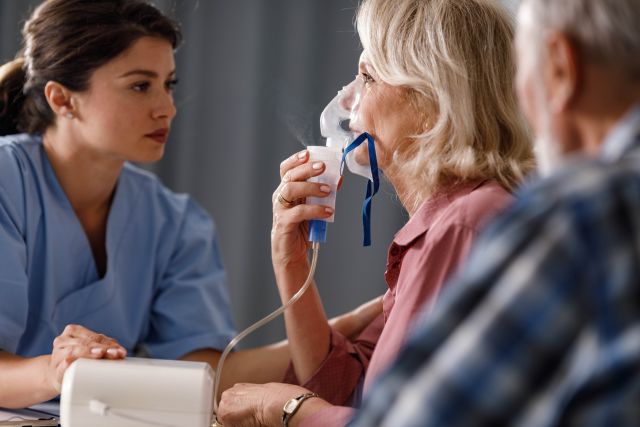Updated on April 7, 2025.
MAC lung disease is a persistent, life-threatening infection caused by Mycobacterium avium complex (MAC), a group of bacteria. These germs are commonly found in soil and water, which can be inhaled into the lungs as a person breathes or when they drink water.
Most people who come into contact with these bacteria will not experience any illness. Others may develop MAC lung disease. Symptoms can include:
- Chronic cough, which may include coughing up mucus or blood
- Fatigue
- Unintended weight loss
- Difficulty breathing
- Night sweats
- Low-grade fever
MAC lung disease has a high mortality rate. Roughly one in four people who have the condition die within five years. But infections can be cured with the right treatment. Here’s what to know.
Providers who treat MAC lung disease
MAC lung disease may be treated by infectious disease specialists or other healthcare providers (HCPs) who specialize in pulmonary (lung) medicine. It commonly affects people with an existing health condition, such as HIV, an autoimmune disorder, an inflammatory condition, or an ongoing respiratory illness. Because of this, diagnosis and treatment may begin with an HCP a person is already working with.
Diagnosing MAC lung disease
The first step to treating any infection is getting an accurate diagnosis. Diagnosing MAC lung disease commonly involves a clinical exam and imagining tests to look for signs of infection in the lungs.
A sputum culture is an essential part of diagnosis for MAC lung disease because it helps rule out other potential causes of infection, including tuberculosis (TB). Sputum is mucus and other substances that are coughed up from the lungs during a productive cough. Analyzing sputum can provide valuable clues to what is causing an infection.
If a sputum culture cannot provide an answer, a procedure called a bronchoscopy can also be used to collect a sample from the lungs.
Treatment for MAC lung disease
Specific treatments for MAC lung disease will depend on the severity of a person’s symptoms, their overall health, and their medical history, among other factors.
In cases where symptoms are mild and imaging tests show minimal signs of infection, treatment may only involve follow-up exams to check a person’s breathing and take additional sputum cultures. This can give the infection a chance to clear up.
Airway clearance is another approach to treatment. This involves therapies that help a person breathe better, help the lungs clear out sputum, and give the body a chance to resolve the infection. These may also be prescribed during treatment with antibiotics or during recovery.
More severe infections will require treatment with antibiotics. Because MAC lung disease is often resistant to treatment, several different antibiotics will be taken together for an extended period of time (12 to 18 months). It can be difficult to take these medications for so long, but good adherence will give a person the best chance of being cured. Treatment may also include oxygen therapy to help maintain healthy blood oxygen levels.
MAC lung disease can be tough to cure and has a high rate of recurrence. An infection will be considered cured when follow-up sputum cultures show no signs of infection for at least one year. If antibiotics are unable cure an infection, surgery may be needed to remove part of the infected lung.
Healthy habits and treatment adherence
During and after treatment, taking certain steps is important to helping manage MAC lung disease. These include:
- Avoiding irritants such as cigarette smoke
- Preventing additional infections by getting appropriate immunizations and maintaining good personal hygiene (hand washing, etc.)
- Adopting healthy lifestyle habits, such as staying physically active and eating a well-balanced diet
An HCP will be able to recommend additional steps for protecting the lungs against MAC lung disease and other infections.







